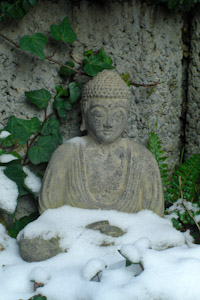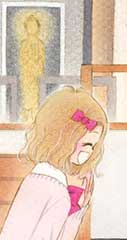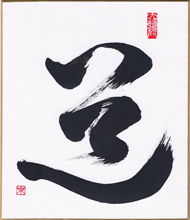Zen without Zazen
 The other day, a reader of my blog expressed his surprise about the fact that, as he put it, I “can not imagine a Zen-life without doing Zazen”. Well, true, for myself I can not. All the Zen-Art I teach (like Hitsuzendo and Aikiken) or practise (like Shakuhachi) is based on Zazen.
The other day, a reader of my blog expressed his surprise about the fact that, as he put it, I “can not imagine a Zen-life without doing Zazen”. Well, true, for myself I can not. All the Zen-Art I teach (like Hitsuzendo and Aikiken) or practise (like Shakuhachi) is based on Zazen.
It is not a big deal, sitting still in silence for some time, regularly, but in my experience, it can make a big change for your life!
So, what about practising a Zen-Art without Zazen, or just reading Zen literature and deal with it as a kind of philosophy? For me this sounds a bit like cooking without eating, or just reading cookery books. Of course it is possible to do that, and of course it is not “forbidden” … but without Zazen, I am sure, it is much more difficult to experience the essence of Zen with your body and mind.
Said that, please feel free to call whatever of your activities “Zen”, and let’s leave the universally valid definition of “correct Zen” to the Zen-Taliban.




